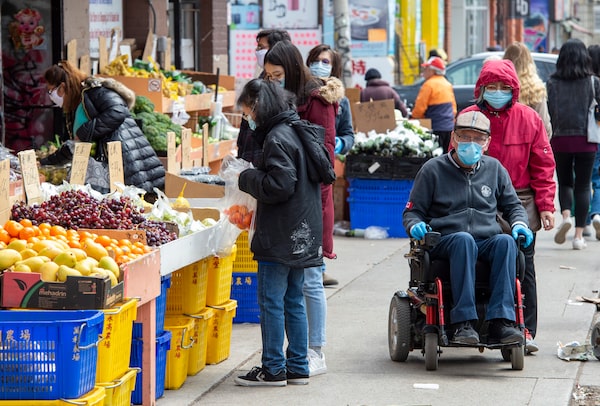Why won’t Toronto open up? The city’s government has been hesitant since the start of the COVID-19 pandemic to make its streets easier to walk and cycle. It has aggressively policed gathering in public spaces and, this week, established a cordon around the 400-acre High Park. The ostensible reason is to keep people apart and so to keep them healthy.
But that position is looking stranger and stranger. Around the world, more than 100 cities are responding to the pandemic not by closing public spaces but by opening them, giving street space to pedestrians and cyclists. A partial list: Milan, Paris, New York, Rotterdam, Copenhagen, Oakland, Bogota and Brampton, Ont.
In these places, politicians and public-health officials have stated a range of positions, including that letting people get outside on foot or by bike is good for their mental and physical health, and that workers who need to commute should have a convenient option to avoid public transit.
But somehow, we’re told, Toronto is different.

Physical distancing is becoming increasingly difficult as spring weather brings shoppers onto the narrow sidewalks in Toronto.Frank Gunn/The Canadian Press
This week, Mayor John Tory announced a program of reorganizing streets, dubbed CurbTO, which is incredibly modest. It will target 100 pinch points around the city, making room for lineups and for car pickups at stores. These will be chosen based on feedback from constituents to councillors, advice from advocacy groups and requests from retailers.
There’s no question that everyone involved is acting in good faith and facing difficult constraints. But Toronto Medical Officer of Health Eileen de Villa and Mr. Tory have both stressed that theirs is an “evidence-informed” approach. This is dubious. When the local No Frills gets to influence policy, it’s not exactly hard science.
More broadly, where is the evidence? Where is the data suggesting that opening up outdoor spaces increases the likelihood of transmission?
When I asked Dr. de Villa this question earlier this week, she offered a long nonanswer. “We felt that we were trying to balance hot spot needs [and] allow those businesses to operate, without encouraging people to be outside,” she said.
It’s hard to tell what is behind these remarks. The answer may be that the risk we perceive, passing strangers on a narrow sidewalk, does not really exist. British Columbia’s Provincial Health Officer Dr. Bonnie Henry said Wednesday that the risk of COVID-19 transmission “would be infinitesimally small if somebody walks by you, runs by you – even if they are within six feet.”
If that’s the case, Toronto public officials should make that clear. And they should move immediately to open a network of streets for active transportation across the entire city.
That is going to be necessary. An extended period of physical distancing will be hard on the mental and physical health of Torontonians. The right move would be to implement a network of bike lanes, along with hundreds of “slow streets,” in which cars are banned except for local traffic.
That approach would reorganize people’s mental maps of the city. Rather than flock to High Park and a handful of other places, Torontonians and their kids could exercise on their streets. Rather than crowding too-narrow sidewalks, they could take to the pavement. Why not? The streets have lots of empty space, and now everyone can see that.
This week Dr. de Villa said that, as a public-health official, she is “a strong proponent of active transportation.” Now that the politicians have signalled they will listen to her, that ought to continue when we return to normal. Let her recommend the dramatic reshaping of the public realm that Toronto needs. Then the city would, at last, be getting somewhere.
Christopher Mio and Meghan Hoople found themselves jobless and wanting to help in the wake of COVID-19 isolation in Toronto. After flyering their neighbourhood with a free-of-charge offer, they received an outpouring of support and requests from people in need.
The Globe and Mail
Our Morning Update and Evening Update newsletters are written by Globe editors, giving you a concise summary of the day’s most important headlines. Sign up today.